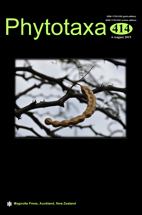Abstract
Echeandia jaliscensis is described from the municipality of Mixtlán, Jalisco, in western Mexico. The new species has white tepals, scaled filaments and connate anthers. Morphologically, it may be confused with E. pringlei and E. nayaritensis. It differs from E. pringlei mainly by having wider and entire leaves. Also, E. jaliscensis has longer tepals and anthers. Larger fruits and the proportion between the length of the anthers and the filaments distinguishes it from E. nayaritensis. Furthermore, the three species occupy different habitats: E. jaliscensis grows in seasonally flooded meadows or grasslands; E. pringlei prefers oak, oak-pine and pine forests; and E. nayaritensis lives in palmar or coastal savannas. Color photographs, line drawings, a distribution map and a key for their identification are included.

